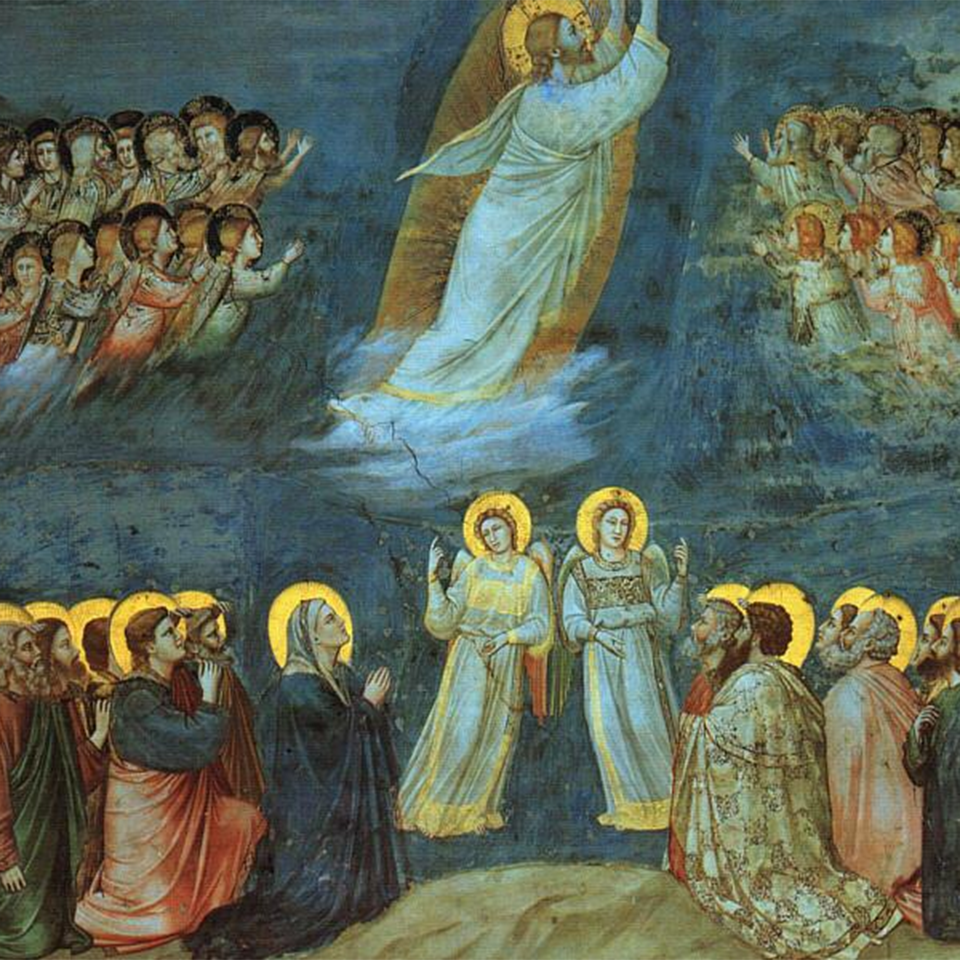Writing on the Ascension of Christ a few years back, Bishop Barron noted that the event is difficult for contemporary, largely Greek-influenced, minds to grasp:
The key to understanding both the meaning and significance of this feast is a recovery of the Jewish sense of heaven and earth. . . . Jesus’ great prayer, which is constantly on the lips of Christians, is distinctively Jewish in inspiration: “Thy kingdom come, thy will be done, on earth as it is in heaven.” Notice please that this is decidedly not a prayer that we might escape from the earth, but rather that earth and heaven might come together.
That’s something I’ve been pondering a great deal lately, as my lectio divina leads me again and again to feed on the rich and mysterious first lines of John’s Gospel:
In the beginning was the Word,
and the Word was with God,
and the Word was God.
He was in the beginning with God.
All things came to be through him,
and without him nothing came to be.
What came to be through him was life,
and this life was the light of the human race;
the light shines in the darkness,
and the darkness has not overcome it.
These are not mere pretty words. This is not simply a poetic idea, but rather a powerful declaration of what God is to us and what we are to God. The Word, the Logos is nothing less than the divinity whose image—perhaps struck by what we call the divine spark—is found in every human breast.
This spark is what renders us capable of co-creation in the procreation of ever-new humanity. It is what allows the Creator to be made manifest in art, in music, in design and philosophy, and even in our evangelical efforts, as we consent to give human assistance to the divine light. It is what we declare back to God, in one of the first antiphons of Lauds: “In your light, we see light itself.”
The light is so penetrating, in fact, that we are more at one with it than we know. Near the end of John’s Gospel, Christ tells us, “You will realize that I am in my Father and you are in me and I in you.” We may glimpse this understanding for a fleeting instant, but it remains terribly easy to lose sight of in the fog of days.
It is this oneness Bishop Barron describes when he writes of the “interacting and interpenetrating fields of force” that are heaven and earth, constantly commingling, and within the Church embodying a true encounter between Bridegroom and Bride.
That is considered archaic language, I know—Flannery O’Connor called it “a metaphor that can be dispensed with”—but the brilliant Ms. O’Connor was perhaps uncharacteristically off the mark in her observation to Cecil Dawkins, both in her dismissiveness and in calling what is a real and daily action nothing but metaphor.
If we could reclaim the metaphor of the bride and groom we might be better able to teach the very dogmas that O’Connor championed so passionately, and which are every day a little less comprehensible to most Christians. For that matter, if we were less prudish about acknowledging the interplay between heaven and earth as lovemaking, our oversaturated and exhausted culture of hook-ups and sterile encounters might become reopened to the true meaning of the sex act and to a re-appreciation of its light-from-light power.
If heaven and earth are in a constant flux—reaching for each other, touching each other and “making all things new”—then the Ascension (earth reaching heaven) becomes less incomprehensible. It reveals itself as being of a piece—a correlating piece—with the Pentecost (heaven reaching earth) and so, too, the dogmas of the Assumption (earth to heaven) and the Immaculate Conception (heaven to earth).
In fact, they are even more fully understood in the light of yet another dimension of the divine spark within humanity: science, and what we understand from the discovery of microchimerism, and the reality that every child conceived leaves within the mother a microscopic bit of himself or herself, which remains there, forever.
The science illuminates the faith, helps us to further understand the mystery of the Theotokos, the God-bearer, Mary as being indeed a tabernacle for the divinity—not for a limited time but for eternity. Thus the Immaculate Conception made and makes perfect sense: God who is all good is also completely pure; the vessel in which he resides, then, must also be pure, or it would not be able to sustain all of that light.
And this correlates directly to the Assumption of Mary as well. In Psalm 16:10 we read, “You will not suffer your beloved to undergo corruption.” Christ’s divine body did not undergo corruption, but ascended into heaven; it follows that his mother’s body, which contained a cellular component of that divinity (and a particle of God is God, entire) would not be permitted to undergo corruption either.
Once more, we see that the feasts and teachings of the Church are all warp and woof, weaving everything of Christ into a marvelous whole.
It could not be otherwise. The God particle, commingled with humanity, necessarily preserves humanity, and calls it to himself. This is incarnational. It is Eucharistic, from the beginning. It is our life, conceived in light.
